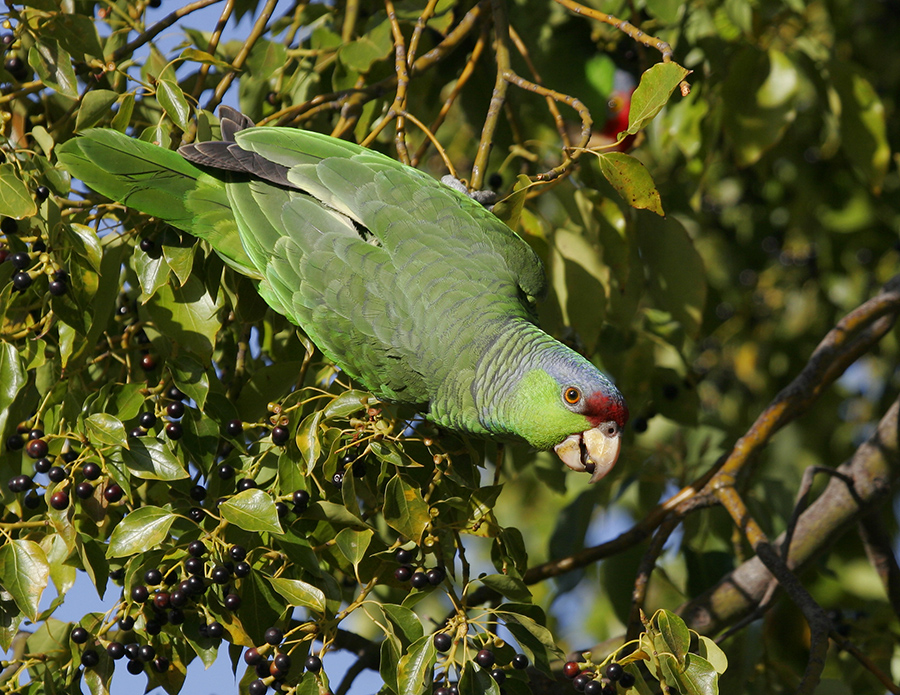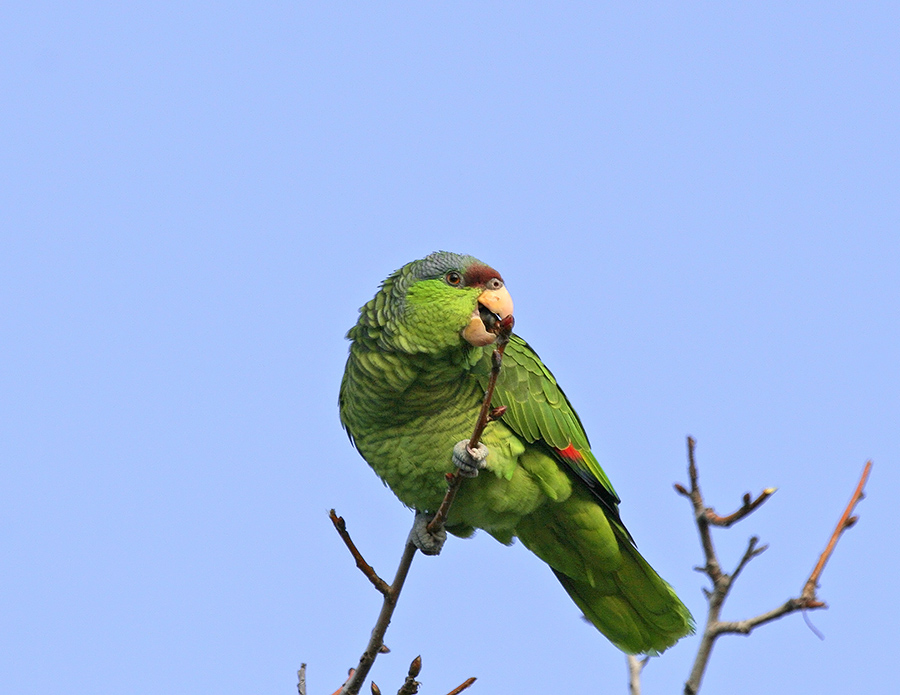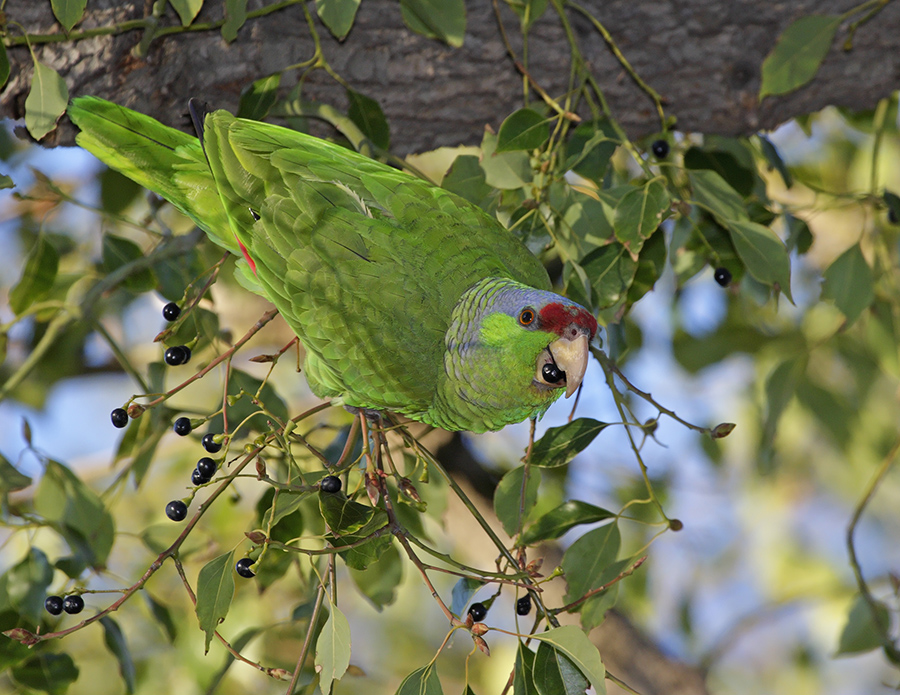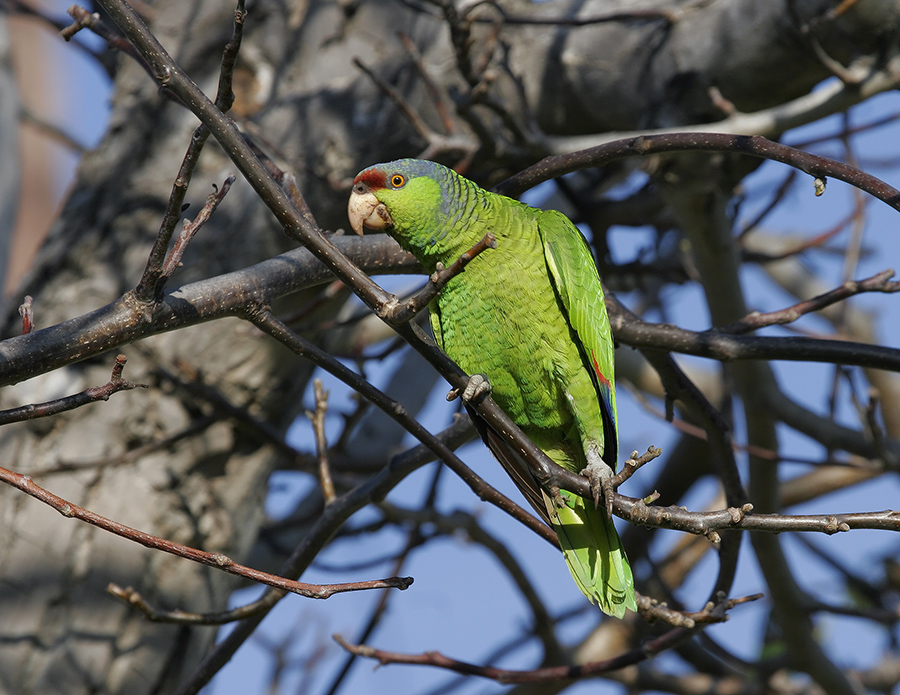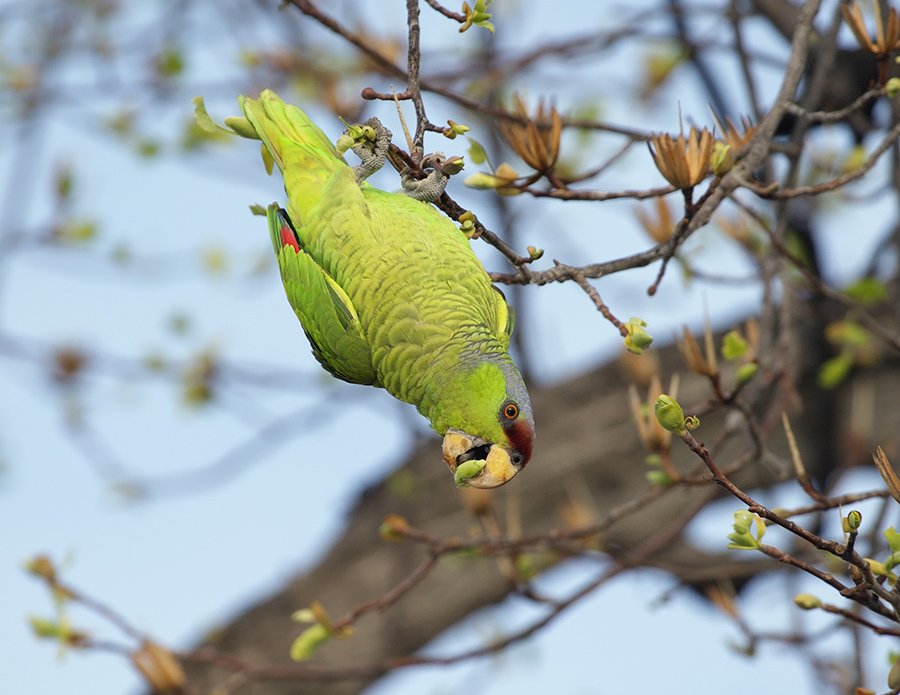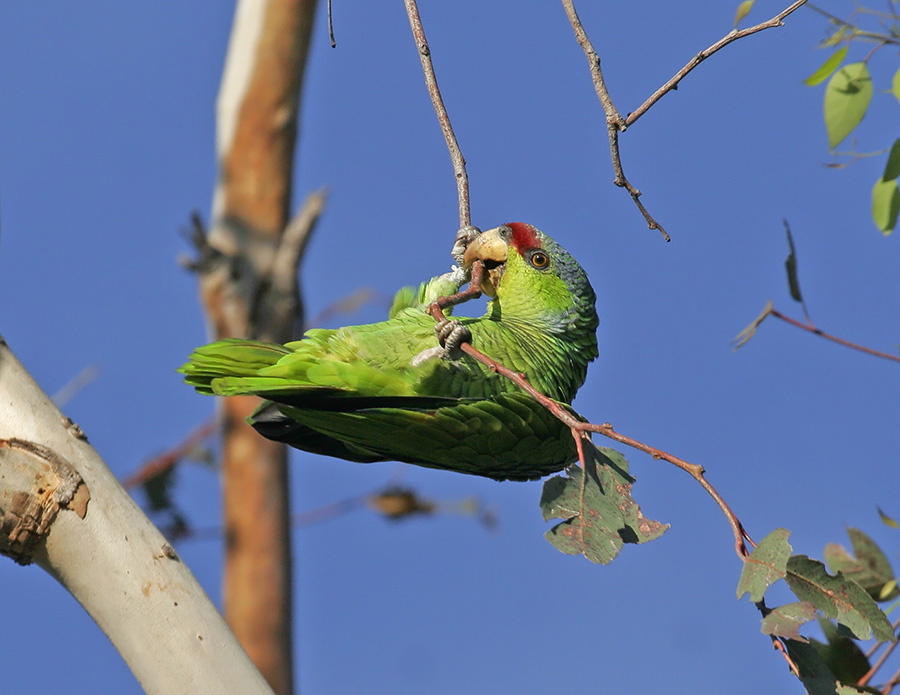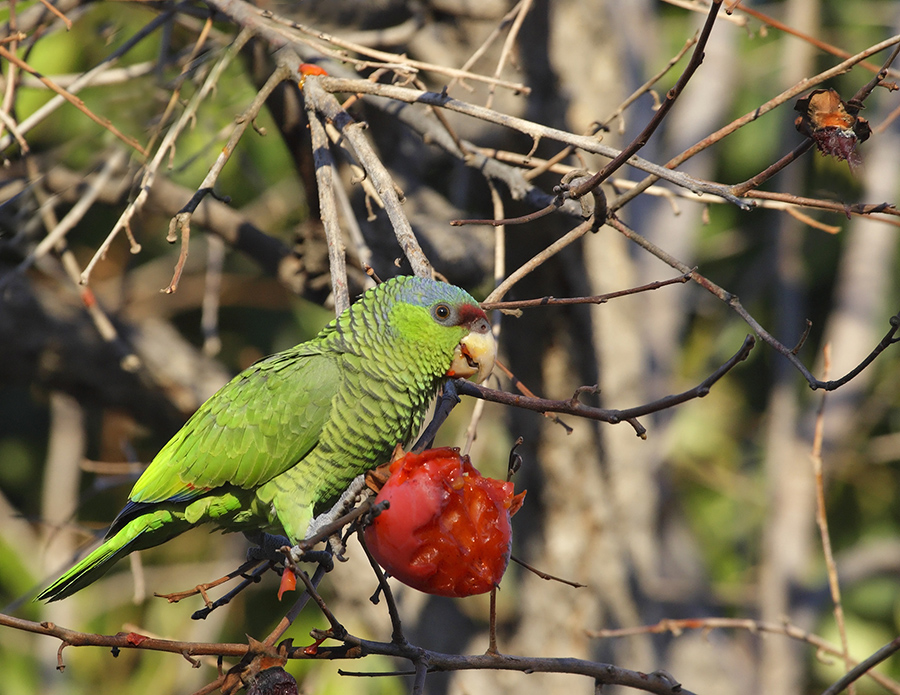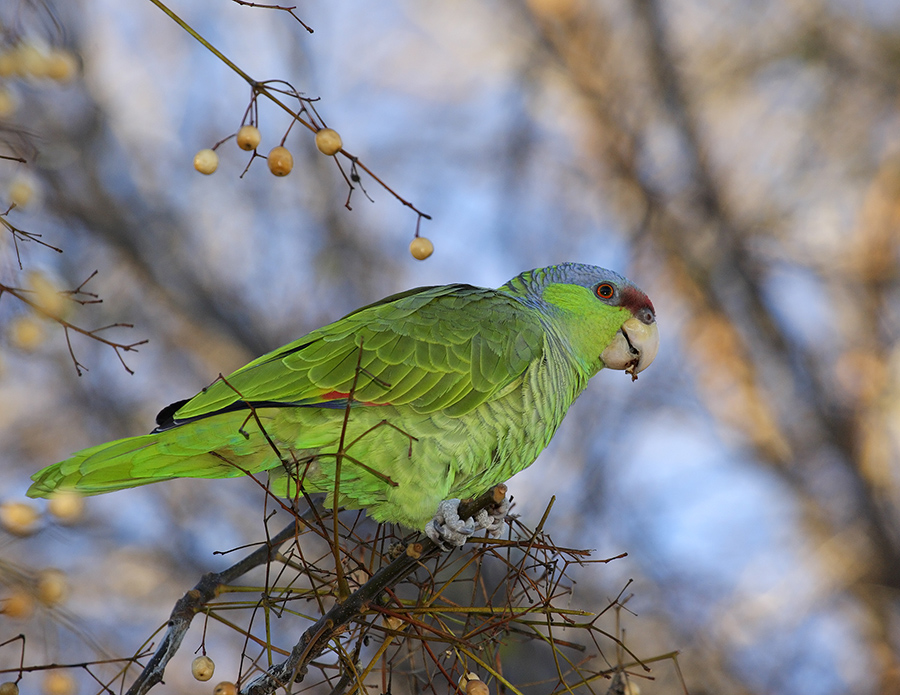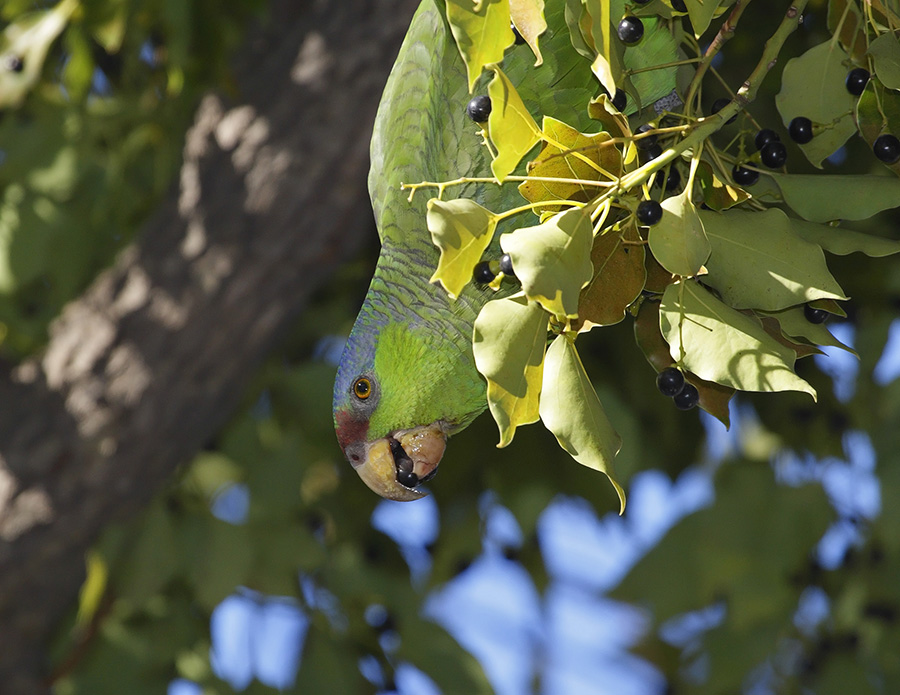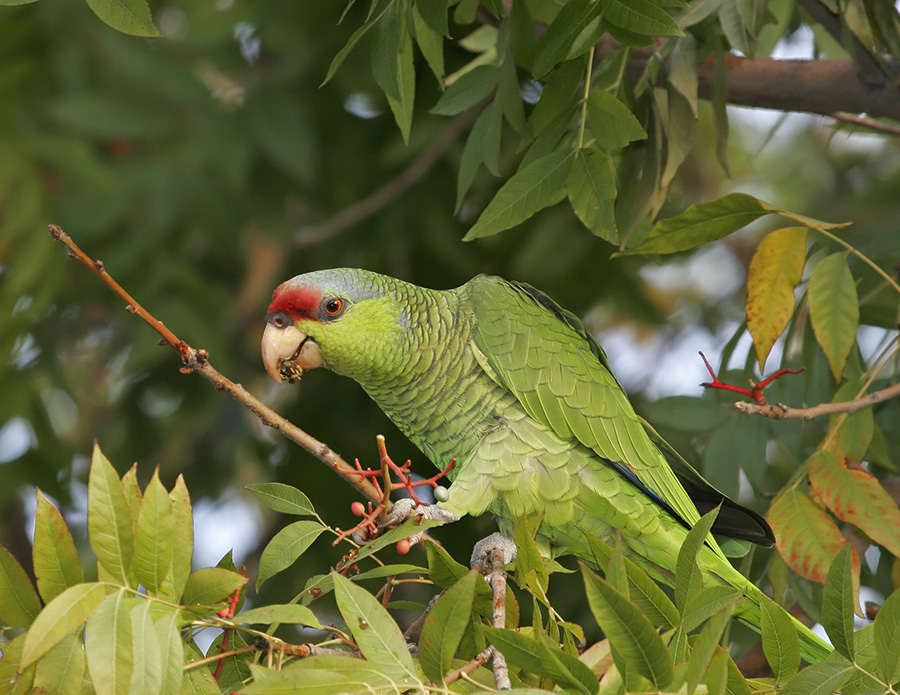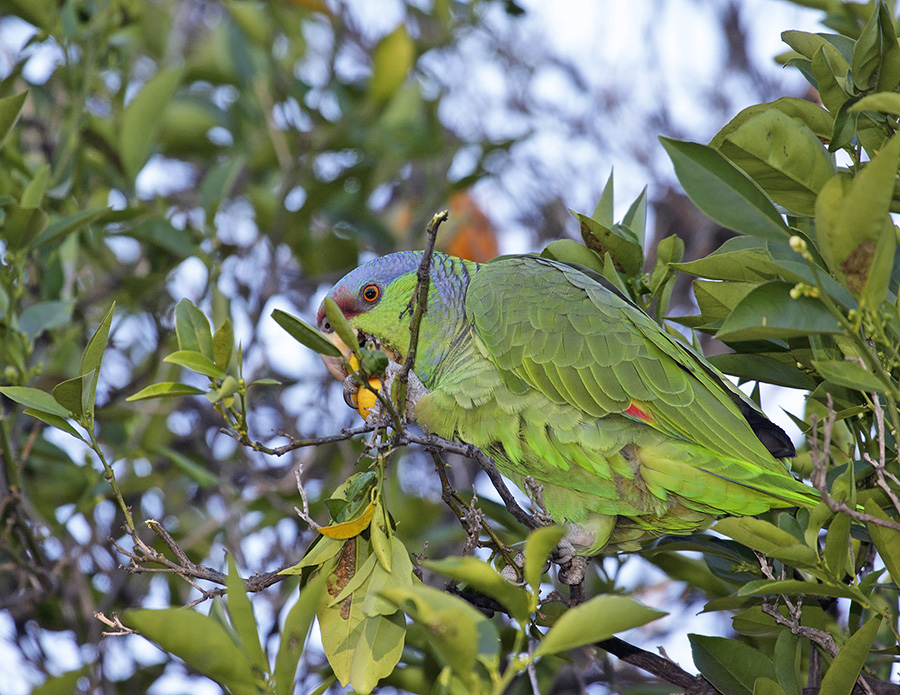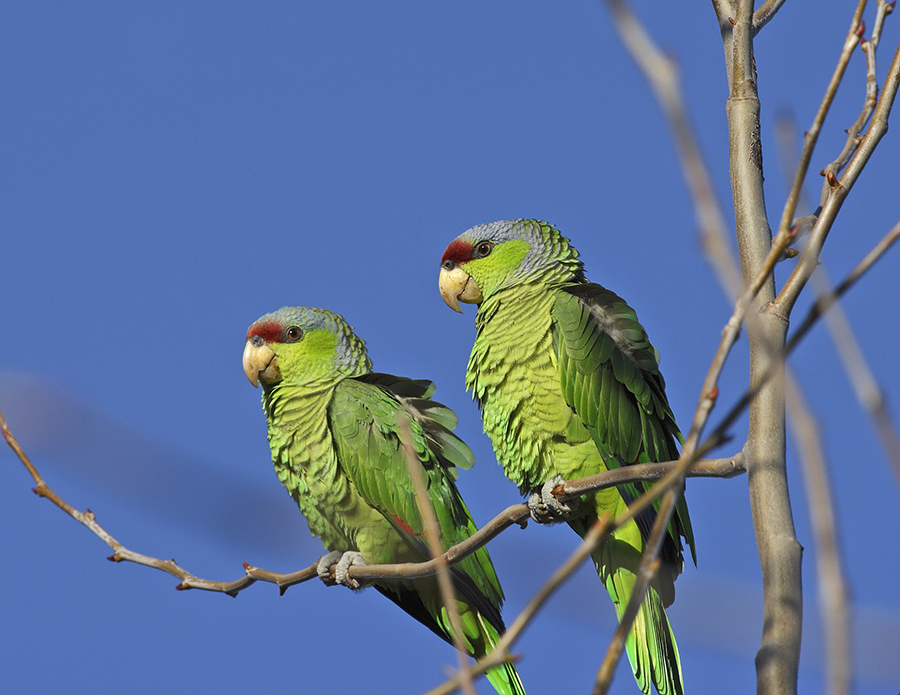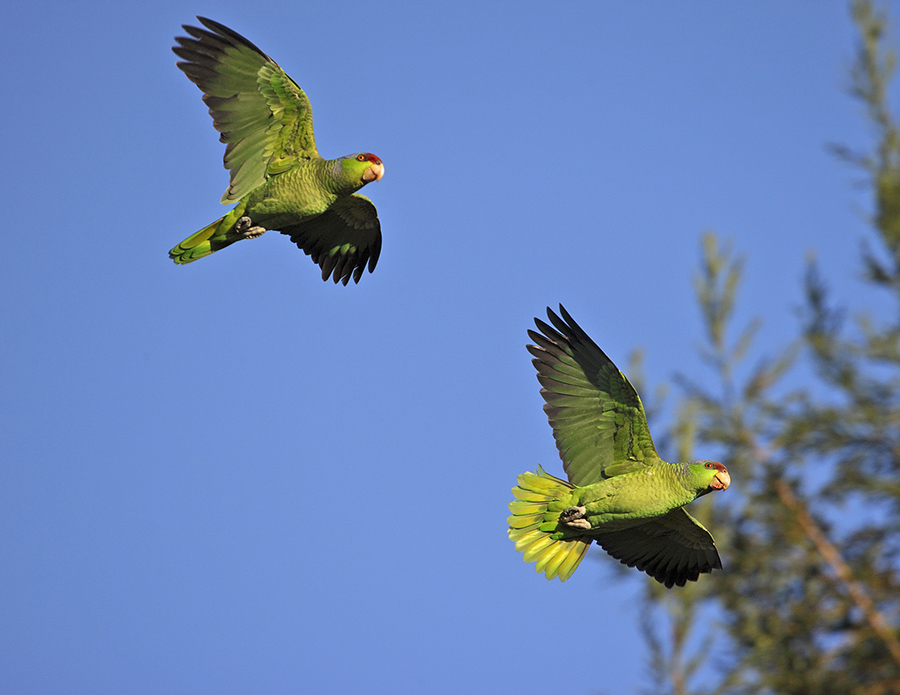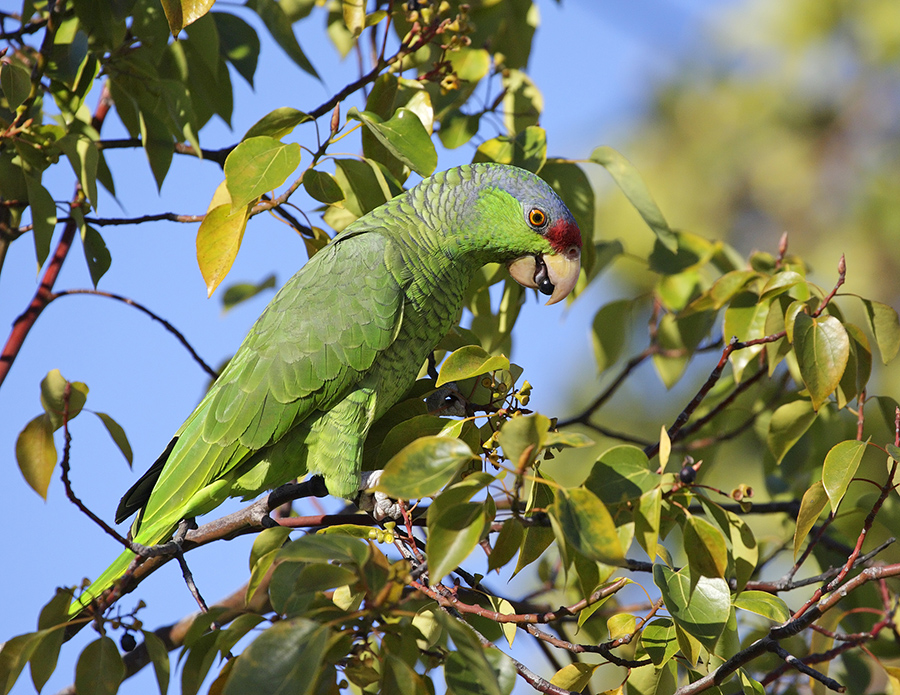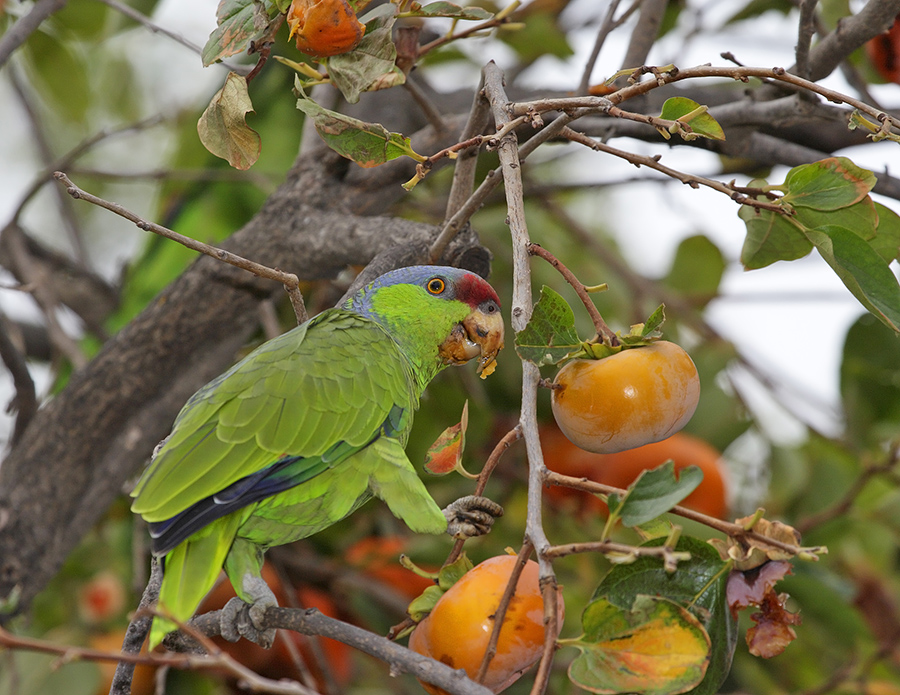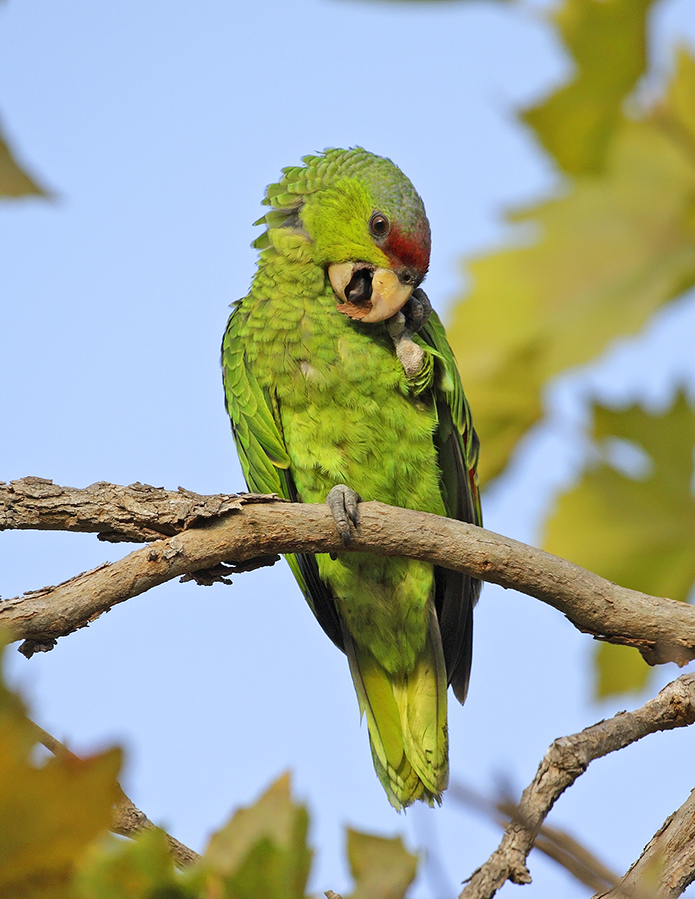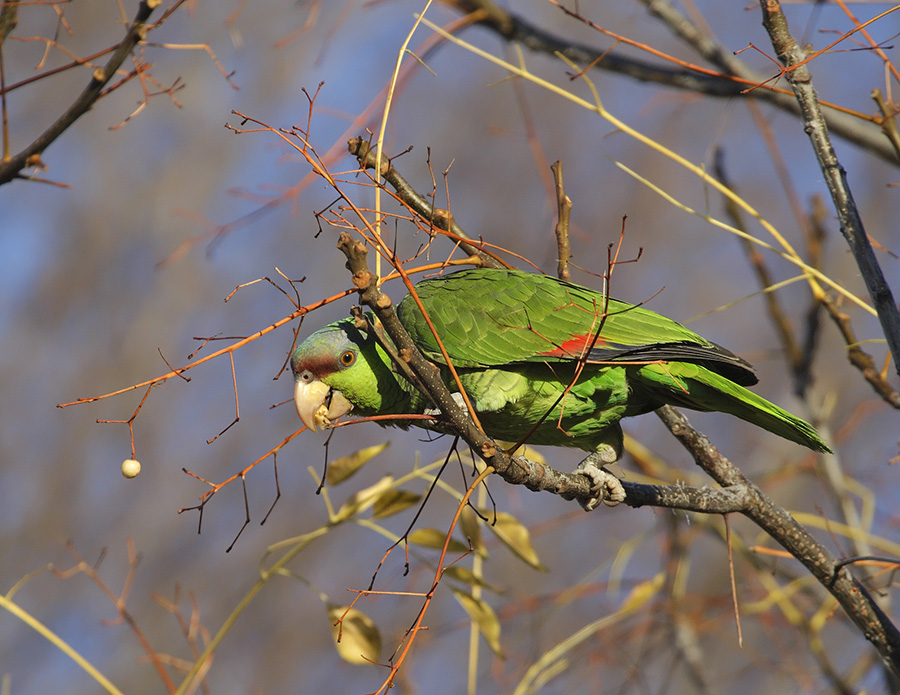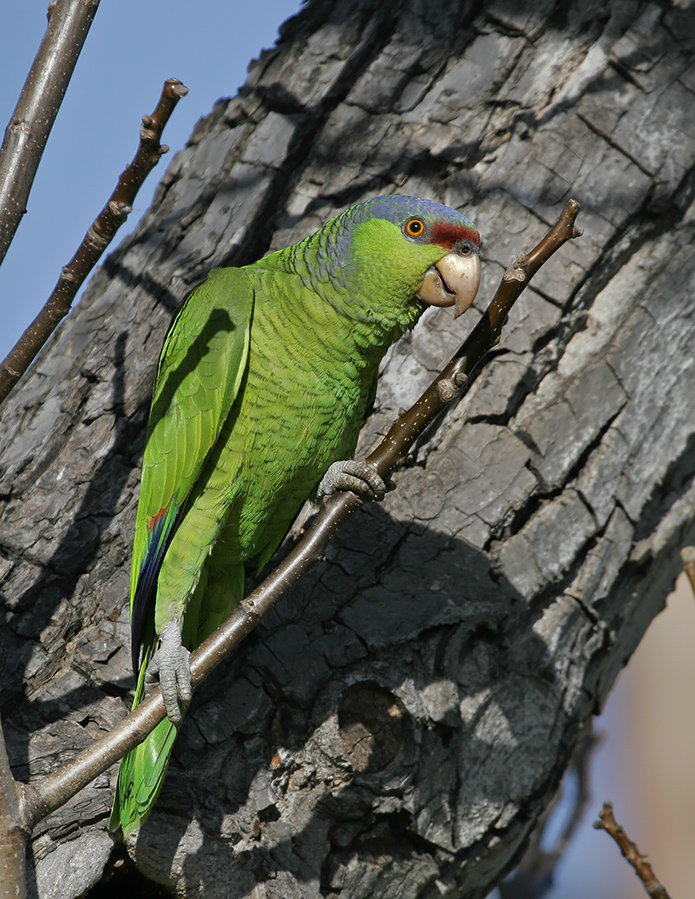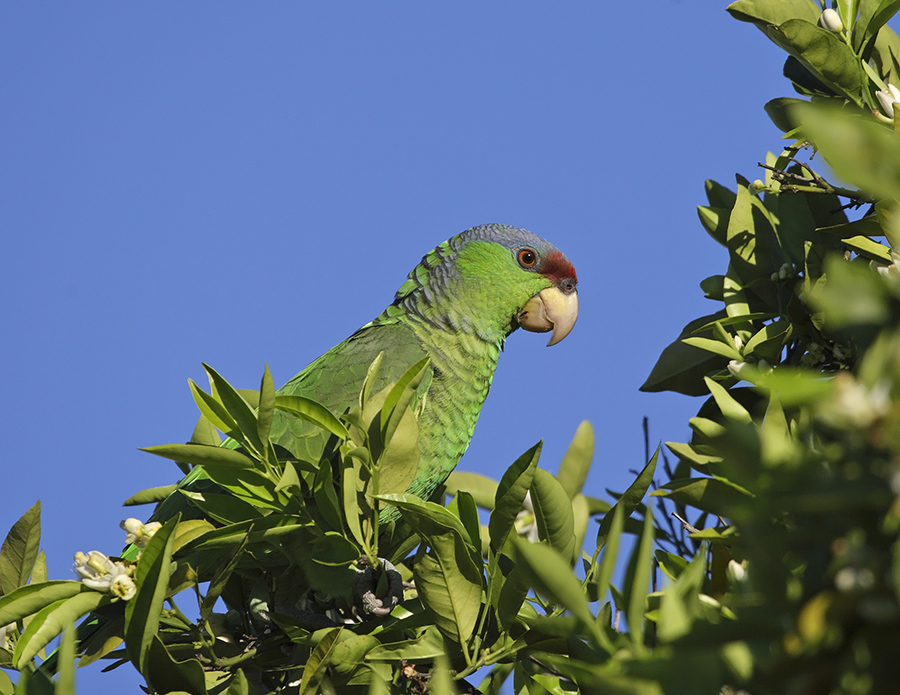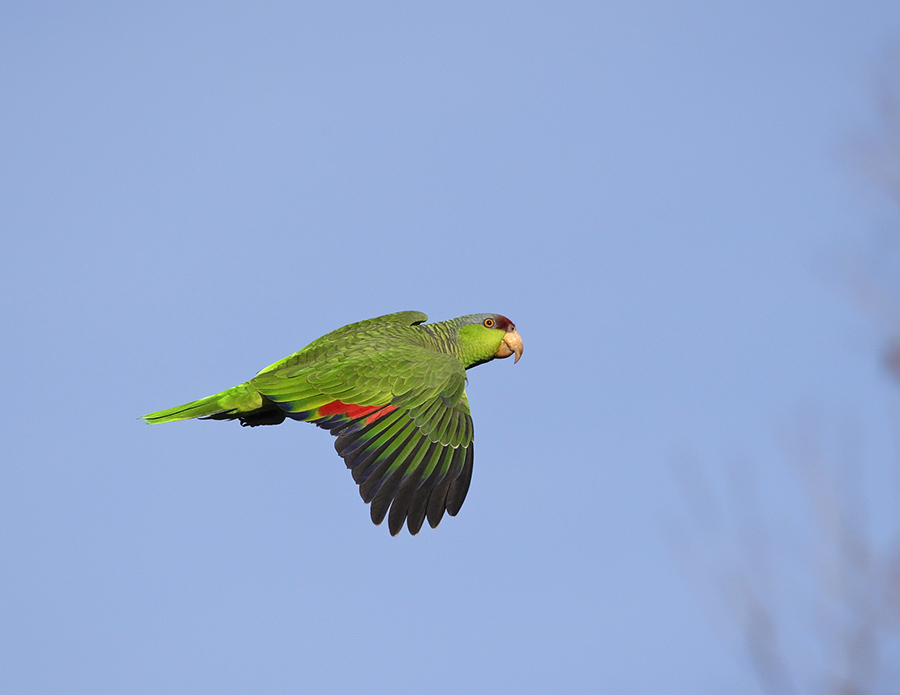Lilac-crowned Amazon
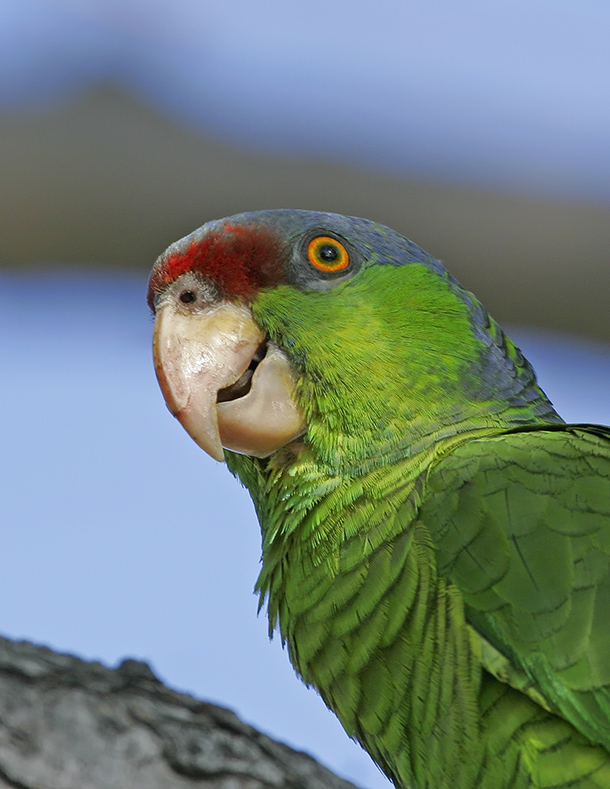
Scientific Name: Amazona finschi
Species Authority: (Sclater, 1864)
Common Names:
Lilac-crowned Amazon
Lilac-crowned Parrot
Native to: Mexico
Status: ENDANGERED SPECIES — IUCN Red List
Assessed: August 2020
Population Trend: Decreasing
The Lilac-crowned Amazon, scientifically known as Amazona finschi, is a vibrant and intriguing bird native to the Pacific slopes of Mexico. This species, adorned with a distinctive lilac-colored patch on its head, offers a remarkable glimpse into the complex world of parrots.
Habitat and Range
The Lilac-crowned Amazon primarily inhabits the tropical deciduous forests along the western coast of Mexico. These forests, characterized by their seasonal leaf shedding, provide an ideal environment for these birds. They are also found in areas with evergreen growth, showcasing their adaptability to different forest types.
This species is predominantly located in regions stretching from Sonora and southwestern Chihuahua south to Oaxaca. Their preference for lower elevations, typically below 1,000 meters, makes them more accessible for observation compared to some high-altitude dwelling species.
Diet and Feeding Habits
In the wild, the Lilac-crowned Amazon has a varied diet primarily consisting of fruits, seeds, nuts, and berries. They are particularly fond of the fruits from local trees such as figs and wild bananas. These parrots are also known to consume flowers and nectar, playing a role in pollination.
Their foraging behavior is often observed in small flocks or pairs, especially during the breeding season. They have a unique ability to use their feet as hands, skillfully manipulating their food while eating.
Conservation Status
The Lilac-crowned Amazon is currently listed as endangered on the IUCN Red List of Threatened Species. This status is primarily due to habitat loss and the illegal pet trade. Deforestation for agriculture and urban development has significantly reduced their natural habitat, while trapping for the pet trade has depleted their wild populations.
Conservation efforts are in place, focusing on habitat protection and anti-poaching measures. Public awareness campaigns are also critical in reducing the demand for these birds in the illegal pet trade.
In Conclusion
The Lilac-crowned Amazon stands as a symbol of the rich biodiversity found in Mexico’s Pacific coastal regions. Its vibrant appearance, complex behaviors, and the challenges it faces in the wild make it a species of great interest to conservationists and bird enthusiasts alike. Protecting this parrot not only helps preserve a beautiful species but also contributes to the larger effort of conserving the diverse ecosystems they inhabit.

